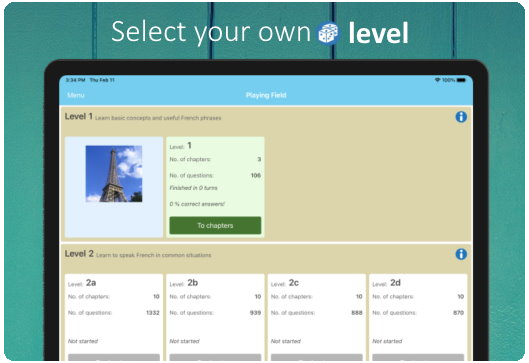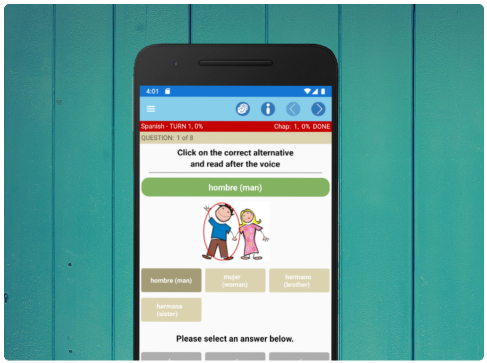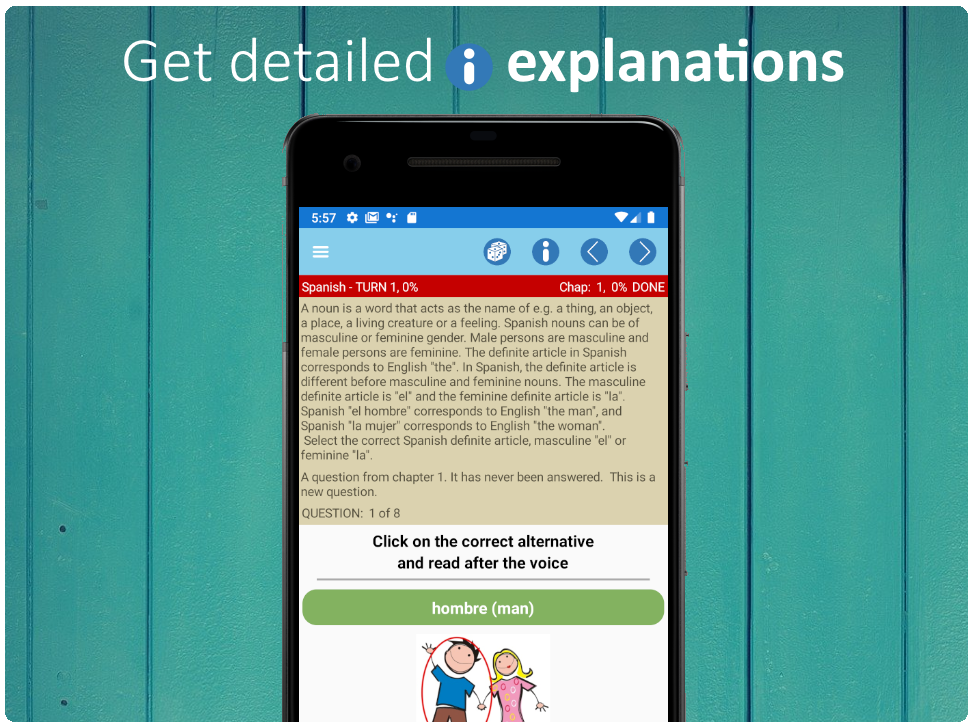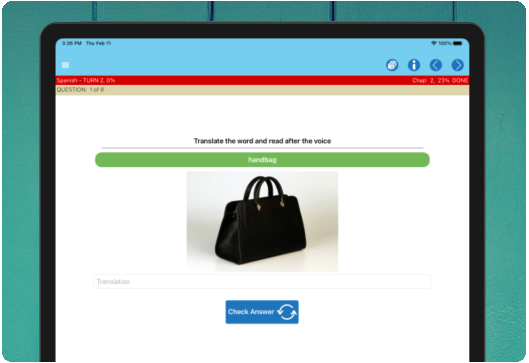
Spanish verbs
Verbs are one of the large open classes of words
To learn Spanish fluently you need to know about 2.000 verbs
Langbird contains that and even more
Verbs express actions, occurences or states of being
Spanish verbs have about 60 different forms
Verbs are often followed by nouns






